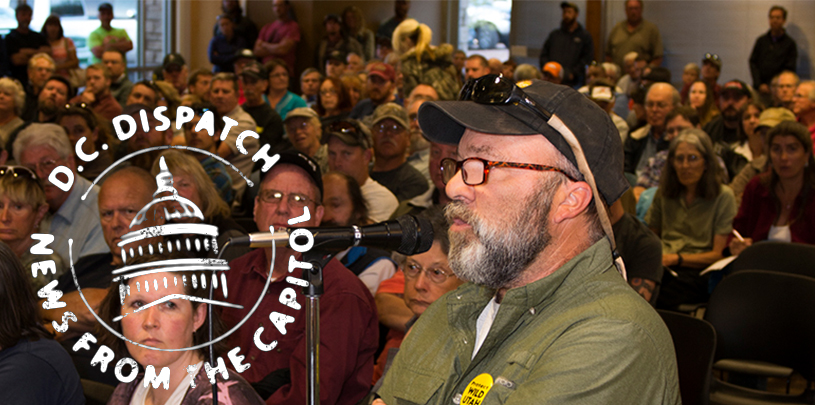
 by Travis Bruner, Arizona Forests Manager
by Travis Bruner, Arizona Forests Manager
Earlier this week, the United States Senate voted to kill a federal rule that encouraged public participation and prioritized science when it comes to managing our public lands. While a resolution to rescind the Bureau of Land Management’s (BLM) Planning 2.0 regulation might sound like an obscure change to bureaucratic process, without it, it will be harder for you and I to voice our opinions on topics like how many cows should graze Grand Staircase-Escalante National Monument. Now, the bill heads to President Trump’s desk where his pen sits ready.
During its short life, BLM Planning 2.0 provided more opportunities for the public to participate in decision-making across the 248 million acres of public lands the BLM manages.
Take a look at BLM acreage by state:
The rule prioritized and emphasized input from local and regional governments and partners, and incorporated up-to-date scientific approaches like location-based (geospatial) data analysis into decisions about where, when, and how to allow activities like mining, grazing, and logging on public lands. BLM Planning 2.0 also saved taxpayers money by reducing resources spent on planning through shortening planning periods and streamlining ways to provide input to the BLM online.
Despite all these benefits, Congress used the Congressional Review Act to rescind this important regulation. It’s worth noting that when regulations are rescinded through this act, the relevant agency—in this case the BLM—is prohibited from issuing similar rules in the future, making it more difficult for the BLM to increase public participation opportunities, efficiency, or science-based decision-making down the road. The act, adopted in 1996, allows Congress 60 legislative days to overturn regulations with only a simple majority. Because Planning 2.0 was finalized recently, on December 1, 2016, it met the same fate as the Stream Protection Rule, falling victim to the latest Congressional Review Act sneak attack on land and water safeguards.
The disappearance of BLM Planning 2.0 impacts how decisions are made on over 21 million acres of BLM lands across the Colorado Plateau, in places like Labyrinth Canyon, the San Rafael Swell, and Cedar Mesa. The process for creating resource management plans, which determine how the BLM manages wildlife habitat, permits mines, grazing, and timber operations, regulates recreation, and protects cultural resources like rock art panels and cliff dwellings across large, connected natural areas, were updated and modernized under the rule.
For example, the rule ensured that the public could weigh in on migration corridors and other important wildlife habitat issues early in the planning process, before competing uses like mining and grazing, so antelope and mule deer migration paths valued by conservationists and sportsmen in northern Arizona would get higher priority. Without the rule, the BLM will return to slow, antiquated, expensive methods of determining how to manage its lands, the very problems this rule was designed to remedy.
As BLM Planning 2.0 disappears, so do all of its potential benefits. Earlier this month, along with several of our allies, the Grand Canyon Trust sent senators a letter opposing rescission of BLM Planning 2.0, and the bill only squeaked by the Senate in a 51-48 vote.
Please act now by calling or writing your senators to express your displeasure with this decision and ask them to oppose any further legislation that cuts down on public process, transparency, and science in planning.
Here are few suggested talking points:
Repealing Planning 2.0 could be the first of many efforts to diminish public participation and science-based decision-making. Help the Trust keep an eye out for ways to stop these attacks and hold our decision-makers accountable by joining our action alert network, where we notify you about opportunities to participate in planning processes for the Four Forest Restoration Initiative, livestock grazing in Grand Staircase-Escalante National Monument, and others projects across the Colorado Plateau.
Proposal to build massive communications tower on state lands inside Bears Ears National Monument withdrawn
Read MoreThe Navajo Nation and communities along the haul route oppose uranium transport from Grand Canyon region mine.
Read MoreDeveloper's attempt to dam a canyon near the confluence of the Colorado and Little Colorado rivers halted.
Read More